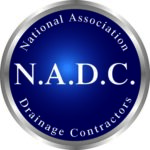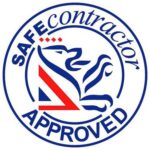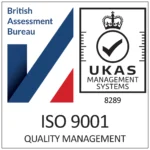We’re proud to serve customers throughout Cumbria and beyond, including:
Cesspit Installation & Maintenance in Cumbria
Cesspits serve as sealed holding tanks for wastewater in properties without mains sewer access or where discharges are strictly controlled. Unlike septic tanks, cesspits do not leach effluent—they rely entirely on regular emptying. At Unblock Cumbria, we offer complete cesspit installation and maintenance services across Cumbria and the Scottish Borders. From planning and construction to ongoing servicing and upgrades, we provide full support for your sealed sewage system.
Whether you’re building a new rural home, converting a property off-grid, or replacing an aging cesspit, we’ll ensure design compliance, efficient installation, and reliable maintenance to keep your system functioning safely.
Cesspit Installation Services
-
Site survey, soil testing, and risk assessment
-
Design of cesspit capacity, construction method, and access layout
-
Building regulation and planning consultation for cesspit systems
-
Construction using durable, watertight materials — concrete, HDPE, or composite modules
-
Installation of manhole covers, ventilation, and access points
-
Integration of inlet/outlet plumbing, ventilation stacks, and overflow controls
-
Testing for watertightness, structural integrity, and safe installation
-
Provision of maintenance manuals and “as-built” documentation
We aim to deliver a system that meets both your property’s needs and regulatory requirements from day one.
Maintenance & Upkeep
Even the best cesspit needs regular attention. Our maintenance services include:
-
Scheduled emptying before tank capacity is exceeded
-
Internal cleaning and sludge removal
-
Inspection of tank structure, baffles, and access points
-
Checking inlet/outlet pipes for blockages, cracks or detritus
-
Replacement of worn covers, seals, ventilation caps
-
Full duty-of-care waste transfer notes and documentation
-
Periodic health checks to detect leaks, corrosion, or fatigue
Regular upkeep ensures your cesspit remains safe, odor-free, and reliable over the long term.
Why Choose Us?
-
End-to-end expertise: from system design to long-term maintenance
-
Licensing and accreditation: registered waste carrier, fully compliant with environmental standards
-
Durable workmanship: high quality materials and precision installation
-
Transparent pricing and clear documentation
-
Local service and support — fast response across Cumbria & Borders
-
Maintenance plans tailored to usage and system capacity
We provide a complete, seamless service so you don’t have to manage multiple contractors or compliance worries.
Why Cesspit Installation & Maintenance Are Vital
-
Prevent overflows and backups — Without regular servicing, cesspits risk overflowing into plumbing or surrounding ground
-
Protect groundwater & environment — Leakage or misuse may cause contamination of soil and water sources
-
Comply with legal and planning obligations — Proper design and maintenance are often required by planning authorities and building regs
-
Reduce long-term costs — A well-installed system with ongoing maintenance is far less costly than emergency repairs or replacements
-
Preserve property infrastructure — Proper installation helps avoid structural damage, subsidence, or collapse
A robust installation plus consistent maintenance keeps your system reliable and legally compliant.
Areas We Cover
- Whitehaven
- Workington
- Carlisle
- Keswick
- Wigton
- Kendal
- Windermere
- Penrith
- Barrow-in-Furness
- and surrounding areas across the Scottish Borders.
If you’re unsure whether we cover your location, just give us a call — our friendly team will be happy to help.
Frequently asked questions
Does a cesspit need planning permission?
Yes — most new cesspit installations require planning permission and building regulation approval. We guide you through the application process and ensure your system is compliant.
What size cesspit do I need?
Size depends on anticipated occupancy, water usage, retention period, and site constraints. Typical guidelines require 24–48 hours’ storage plus a safety margin.
How do I maintain a newly installed cesspit?
Follow the service schedule we recommend: regular emptying, internal inspection, and checking of seals, venting, and inlet piping.
Can I convert a cesspit to a septic tank later?
In many cases yes, if site conditions allow infiltration or a treatment discharge. We can advise on upgrade paths and handle conversions.
How long should a well-built cesspit last?
With proper construction and maintenance, a cesspit should function reliably for decades. The structural shell is long lasting; most issues arise from misuse or neglect.
Get Your Free Quote
Ready to build a reliable cesspit or set up a robust maintenance plan? Call 01900 870 140 or complete our contact form. Unblock Cumbria will design, install, and support your sealed sewage system with total confidence.





